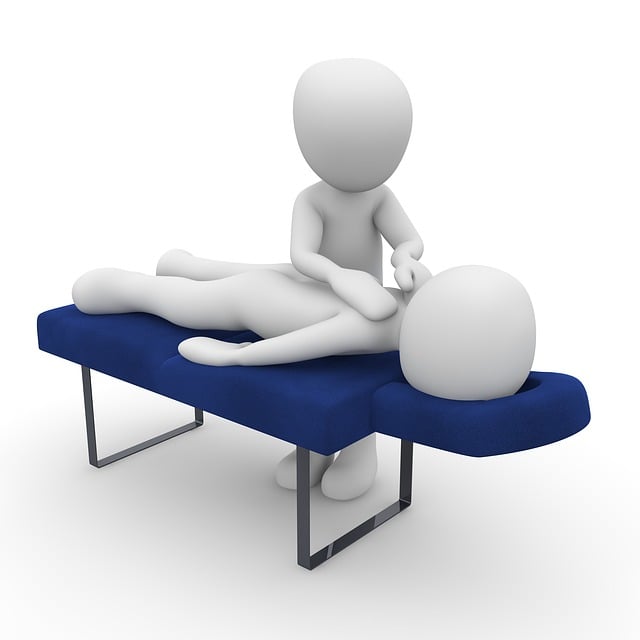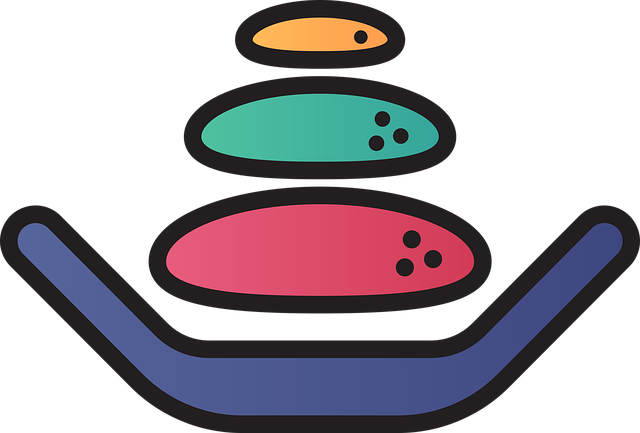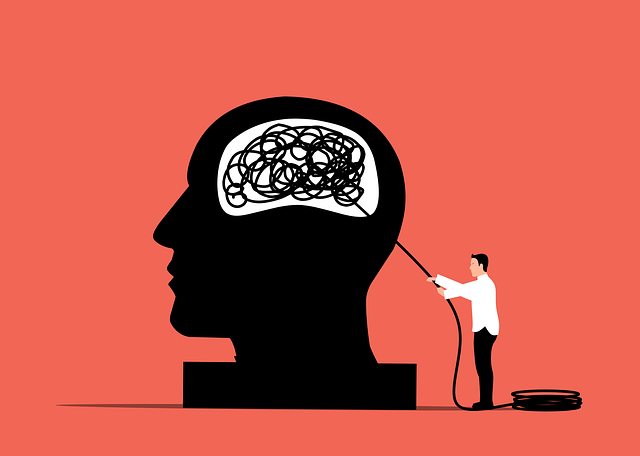TL;DR:
CBT therapy is an effective, structured approach to managing Obsessive-Compulsive Disorder (OCD). By identifying and changing negative thought patterns and behaviors, including techniques like exposure and response prevention, CBT empowers individuals to challenge obsessions, reduce compulsions, and improve their quality of life. Case studies demonstrate its success in treating various OCD symptoms, making it a leading evidence-based treatment option.
“Discover a powerful tool in the fight against obsessive-compulsive disorder (OCD) through Cognitive Behavioral Therapy (CBT). This therapeutic approach has proven effective in managing OCD symptoms, offering hope for those affected.
The article explores the intricate relationship between CBT and OCD treatment, delving into how CBT challenges obsessions and modifies unwanted behaviors. We’ll guide you through coping skill development and present compelling case studies showcasing successful CBT implementations. By the end, understand why CBT therapy is a prominent choice for OCD relief.”
Understanding Obsessive-Compulsive Disorder (OCD)

Obsessive-Compulsive Disorder (OCD) is a mental health condition characterized by intrusive thoughts and repetitive behaviors that individuals feel compelled to perform. These obsessions and compulsions can significantly impact daily life, causing distress and disrupting normal routines. Individuals with OCD often recognize that their thoughts and actions don’t make logical sense but feel unable to resist them. Common obsessions include worries about contamination, symmetry, or doubt, while corresponding compulsions may involve excessive cleaning, checking, or mental rituals.
Cognitive Behavioral Therapy (CBT) is a highly effective treatment for OCD. It focuses on identifying and modifying negative thought patterns and behaviors. Through CBT, individuals learn to challenge their obsessive thoughts, develop healthier coping strategies, and gradually reduce engagement in compulsive behaviors. This therapy empowers patients to manage their symptoms, regain control over their lives, and improve overall well-being.
What is Cognitive Behavioral Therapy (CBT)?

Cognitive Behavioral Therapy (CBT) is a form of talk therapy that focuses on identifying and changing negative thought patterns and behaviors. It’s a structured and goal-oriented approach designed to help individuals manage various mental health conditions, including obsessive-compulsive disorder (OCD). CBT for OCD involves helping patients understand the connection between their thoughts, feelings, and actions, specifically addressing obsessions and compulsions.
During CBT sessions, therapists guide individuals through a process of challenge and replacement. They learn to recognize and challenge unhelpful cognitive distortions, such as exaggerated anxiety or black-and-white thinking. By replacing these negative thought patterns with more realistic and balanced ones, individuals can reduce their obsessive thoughts and decrease the urge to perform compulsive behaviors. This evidence-based therapy has shown significant effectiveness in managing OCD symptoms and improving overall quality of life.
The Link Between CBT and OCD Treatment

Cognitive Behavioral Therapy (CBT) has established itself as a highly effective approach in treating obsessive-compulsive disorder (OCD). This evidence-based therapy focuses on identifying and changing unhelpful thought patterns and behaviors that contribute to OCD symptoms. By understanding the link between one’s thoughts, feelings, and actions, CBT empowers individuals to challenge and modify their obsessions and compulsions.
The core principle of CBT involves helping patients recognize that their obsessive thoughts are not a reflection of reality but rather distorted cognitive interpretations. Through various techniques, such as exposure and response prevention (ERP), individuals learn to confront their fears without engaging in compulsive behaviors. This process gradually reduces anxiety and the urge to perform rituals, leading to improved overall functioning and quality of life for those with OCD.
How CBT Helps Challenge Obsessions

Cognitive Behavioral Therapy (CBT) is a highly effective approach in challenging and managing obsessive-compulsive disorder (OCD). It focuses on modifying unhelpful thought patterns and behaviors that contribute to OCD symptoms. Through CBT, individuals learn to identify and challenge their obsessive thoughts, understanding that these intrusive ideas do not reflect reality. By questioning the validity of obsessions, patients can reduce their anxiety and resistance to compulsions.
The therapy involves various techniques such as exposure and response prevention (ERP), where individuals gradually expose themselves to feared situations or objects without performing compulsive rituals. This process helps desensitize them to the obsessions over time. CBT also encourages homework assignments, where patients practice new coping strategies between sessions, reinforcing positive changes and a better understanding of their condition.
Strategies for Modifying Unwanted Behaviors

Cognitive Behavioral Therapy (CBT) offers effective strategies for modifying unwanted behaviors associated with obsessive-compulsive disorder (OCD). The core principle is to challenge and change unhelpful thought patterns and behaviors that contribute to OCD symptoms. One key approach involves gradual exposure to triggers, enabling individuals to face their fears without performing compulsive rituals. This process, known as exposure therapy, helps individuals learn to manage anxiety and reduce the urge to engage in repetitive behaviors.
Additionally, CBT teaches techniques to resist compulsions, such as mindfulness practices and cognitive restructuring. Mindfulness helps individuals become more aware of their thoughts and feelings without judgment, allowing them to recognize when obsessions arise and choose different responses. Cognitive restructuring involves identifying and modifying irrational beliefs, thereby reducing the power of obsessive thoughts and decreasing the need for compensatory behaviors.
Building Coping Skills with CBT Techniques

Cognitive Behavioral Therapy (CBT) is a powerful tool for managing obsessive-compulsive disorder (OCD). Through CBT, individuals learn to identify and challenge distorted thought patterns that contribute to obsessions and compulsions. This process involves understanding the connection between thoughts, feelings, and behaviors, allowing people to develop healthier coping strategies.
One of the key aspects of CBT for OCD is acquiring practical skills to manage symptoms effectively. Techniques such as exposure and response prevention (ERP) help individuals gradually face feared situations without performing compulsive rituals. By practicing these skills, individuals build resilience and learn to tolerate uncertainty, reducing the impact of obsessions over time.
Case Studies: Successful CBT Implementations

Case studies illustrate the powerful impact of Cognitive Behavioral Therapy (CBT) in managing obsessive-compulsive disorder (OCD). One notable example involves a patient who struggled with intense fear of contamination, leading to excessive handwashing rituals. Through CBT, they learned to challenge and reframe their thoughts, gradually reducing compulsive behaviors. This successful implementation demonstrated how CBT helps individuals gain control over their lives by modifying irrational beliefs and behaviors.
Another case highlights a young adult who experienced intrusive thoughts related to symmetry and order. Using exposure and response prevention techniques within CBT, they were guided to confront these obsessions without performing compensatory rituals. Over time, this approach led to significant improvement in symptoms, showcasing the effectiveness of CBT therapy in treating OCD by empowering individuals to manage their disorders effectively.
Conclusion: Finding Relief with CBT

CBT therapy offers a powerful and effective approach to managing obsessive-compulsive disorder (OCD). By focusing on challenging negative thought patterns and modifying behaviors, individuals can gain control over their symptoms and improve their overall well-being. Through this process, they learn to distinguish between true threats and worries, reducing the urge to engage in repetitive behaviors or mental rituals.
The success of CBT lies in its ability to empower individuals with practical coping strategies. It equips them with the skills to navigate triggers, face fears, and make sense of intrusive thoughts without resorting to compulsive actions. As a result, many people experience significant relief from OCD symptoms, leading to improved quality of life. This form of therapy has consistently shown promising outcomes, making it a top choice for those seeking long-lasting freedom from the grip of OCD.
